Samos, devastated in the early 16th century, became part of the Ottoman Empire. It was repopulated with Christians and former inhabitants. By 1912, when Samos united with Greece, it was autonomous, self-governed, and thriving economically.

Towards the end of the 18th century and the beginning of the 19th, the society of Samos underwent a transformation. The rise of shipping and trade brought forward a new group of local leaders (Karmanioli) who challenged the traditional leaders (Kallikantzari) for power.

Konstantis Lachanas was born in Ano Vathy, Samos, in 1769. He was a captain and a key figure among the Karmanioli, who clashed with the Kallikantzari. A member of the Filiki Eteria, Lachanas played a leading role in the 1821 Samos Revolution against the Ottoman Empire.

In Samos, factions of local leaders vied for control of the island, which was paying tribute to the Ottoman Empire. In 1824, the “Kallikantzari” regained power from the “Karmanioli”, leading to Ottoman intervention. After the fall of Psara, the Sultan aimed to capture Samos. However, the Battle of Samos thwarted his plans.

Samos participated in the Greek Revolution but was not included in the newly established Greek state. It declared autonomy, and Sultan Mahmud II recognised it with the Great Powers as guarantors. However, the island remained a tributary state, with a governor appointed by the Sultan until 1912.

The Church of the Transfiguration of Jesus was built in Pythagorio, Samos, between 1831 and 1833. It was constructed under the leadership of Lykourgos Logothetis and through an island-wide vow to commemorate the victorious Battle of Samos during the Greek War of Independence. The church has been declared a historic monument by the Ministry of Culture.

Lykourgos Logothetis, born Georgios Paplomatas, was the political and military leader of Samos. Known for his role in the Greek Revolution of 1821 and the subsequent autonomy of Samos, his actions also played a part in the infamous “Massacre of Chios.”

In the port of Samos, along the Sofoulis coastal road and in the centre of the square named after him, stands the statue of Themistoklis Sofoulis, an esteemed figure of letters and politics, as a tribute to his work and legacy.

Tobacco cultivation in Samos began during the Principality period (1834-1912). It was helped by an outbreak of the pest phylloxera in the late 19th century, that affected the vineyards. By the end of the century, tobacco processing factories and cigarette production were contributing greatly to the island’s economic and commercial life.
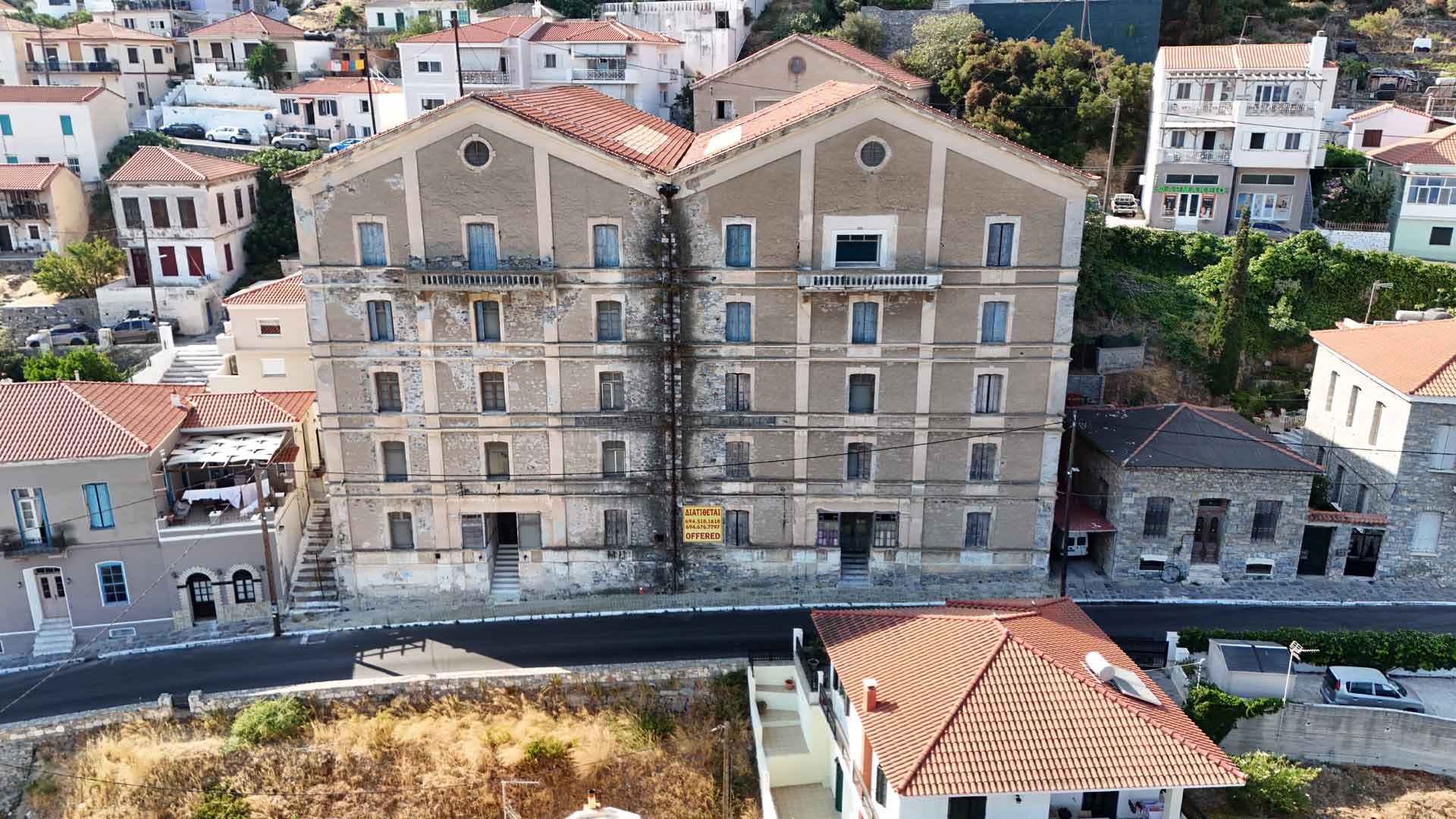
Leatherworking began in Samos in the early 19th century. Ruined old tanneries (known as tabakika) testify to the significant influence they had on social organisation, industrialisation, and the island’s economy, especially during the later Principality period and up to the early 20th century.
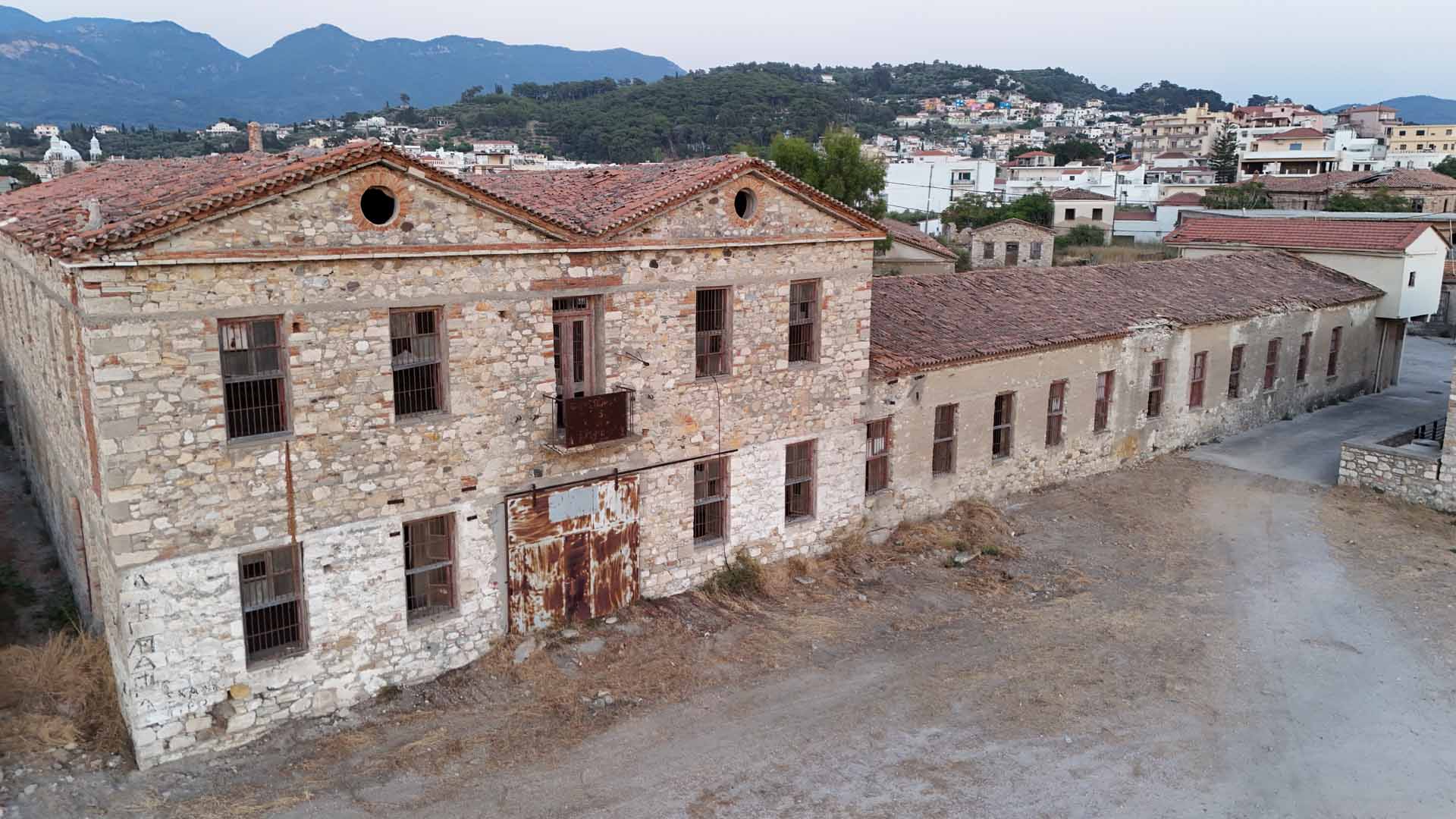
The building that now houses the Public Historical Central Library of Samos was once a private mansion, home to a princely couple and government offices, before becoming the library. Its origins trace back to the Pythagorean Gymnasium.

The General Archives of the State (G.A.K.) of Samos are housed in a historic building of unique architecture. Before becoming a repository of information, this building once served as the Reformatory Prisons of Samos.

The settlement of Mytilinioi in central Samos was named after settlers who arrived in the early 16th century. The local elementary school, founded in 1928, has witnessed all historical periods of the island and continues to function to this day.
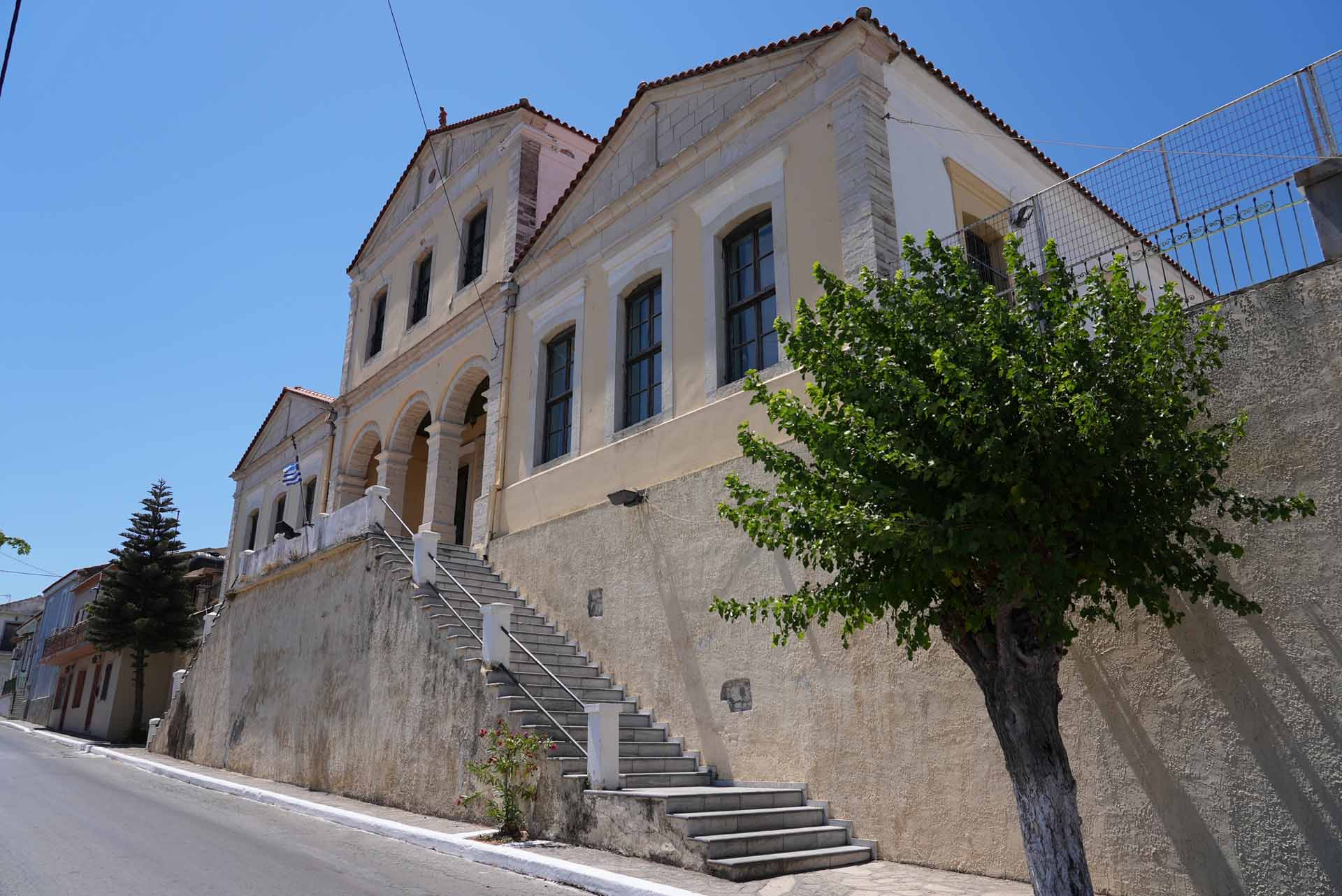
Ως «Επισκοπή Χίου» η λατινική Εκκλησία ιδρύθηκε εκεί κατά τον 13ο αιώνα. Στην Επισκοπή Χίου η Σάμος προσαρτήθηκε το 1792. Ο Ιερός Ναός Μεταστάσεως της Θεοτόκου στο Βαθύ που χτίστηκε στις αρχές της δεκαετίας του 1900, συγκρατεί μνήμες από τη δράση της Καθολικής Αποστολής και έχει χαρακτηριστεί διατηρητέο μνημείο.
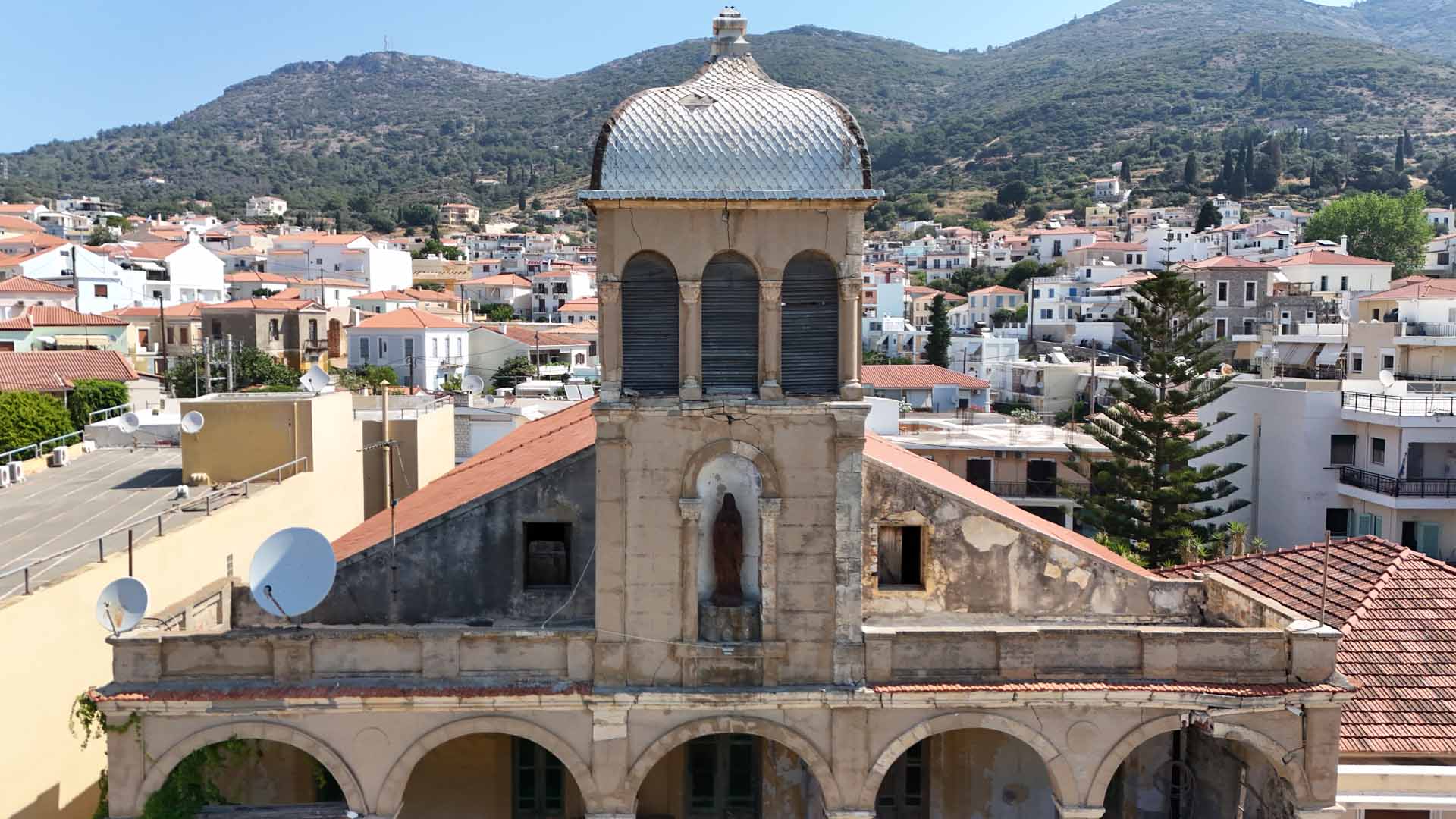
The Cathedral of Saint Spyridon was built in Vathy, Samos, on the site of an older church. It houses the remains of Lykourgos Logothetis and was the site where Themistocles Sophoulis declared Samos’ union with Greece in 1911.
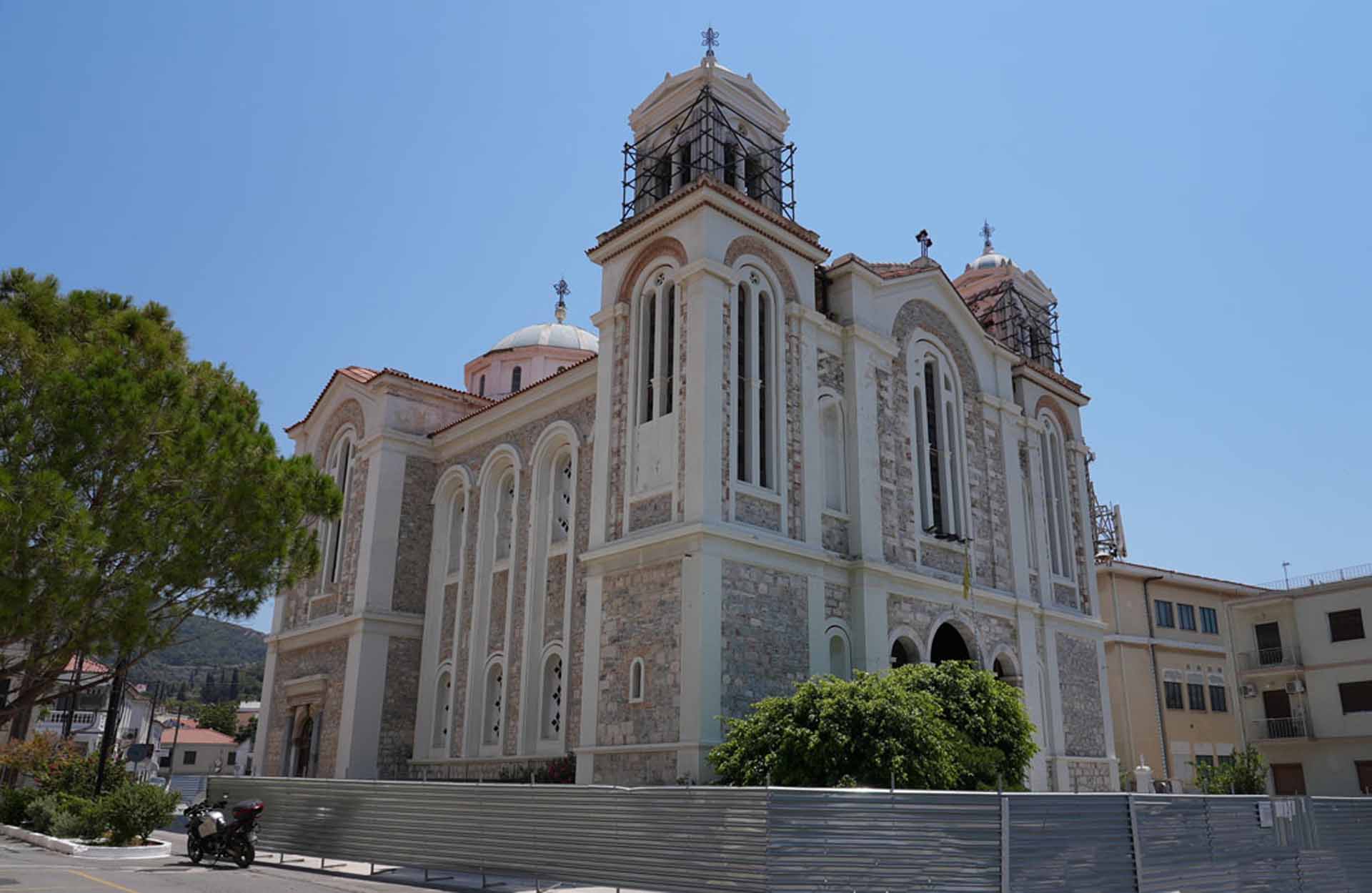
In Karlovasi, a branch of the University of the Aegean Library was established in 1987 when the Department of Mathematics opened. The library occupies the neoclassical building of the Hatzigiannio Girls’ School, built where the Porfyrias School and the Church of Saint Sophia once stood.
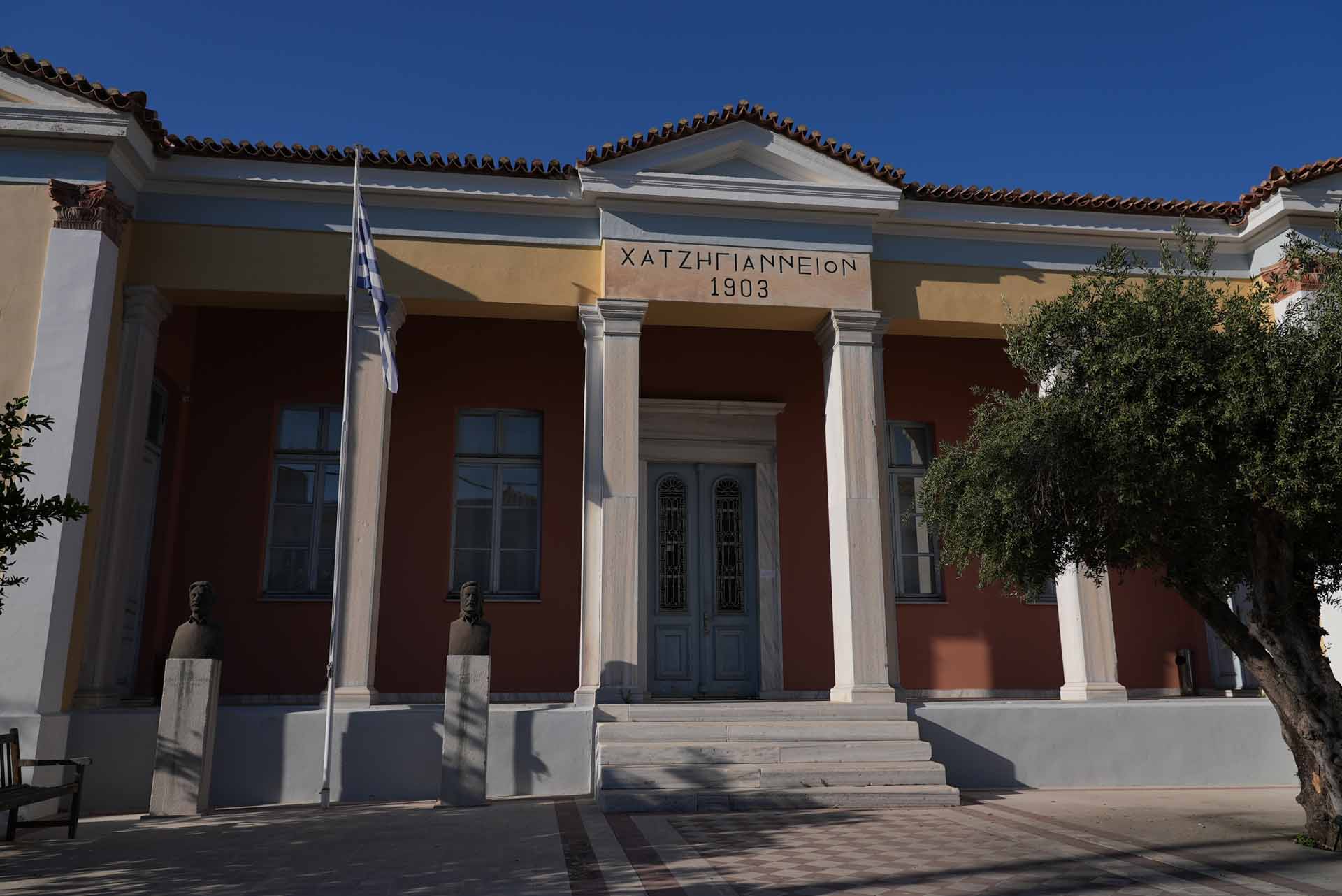
Samos welcomed in 1921 the first 6,000 refugees from Asia Minor. The island was tasked with providing them with temporary care and facilitating their transportation to mainland Greece. As thousands more arrived, conditions worsened, and some refugees settled in urban and rural areas of the island.

Samos’ connection to the vine is said to have begun with the god Dionysos himself, who taught its cultivation to the island’s inhabitants. Historical traces of winemaking on the island can be found in Antiquity. The tradition flourished, waned, and then re-emerged, culminating in the renowned Samos wines we know today. With their protected designation of origin (PDO), these wines are celebrated and exported around the globe.

As of 2024, Samos is home to eight monasteries for men and four for women. The oldest is the Monastery of Panagia Vrontiani in Vourliotes, established in 1566, while the newest is the Monastery of the Dormition of the Virgin Μary in Marathokambos, founded in 1887. Between the two is the Monastery of the Holy Trinity, built in 1824.

Samos fell to Italian forces in 1941, but a strong resistance movement emerged. The National Liberation Front (EAM) and Bishop Irinaios played a significant role. Samos briefly became the first European territory to be liberated during WWII in 1943. This only lasted for 70 days though.

The Italian occupation of Samos began with a bombing in 1941. After a brief liberation, the island suffered another bombardment by the Nazis in 1943. An Allied bombing of a German ship in the port of Vathy in 1944 further increased the destruction of the island.

Samiopoula, the largest of Samos’s islets, once had a small community of residents. Katina Kappou settled there with her husband in the mid-20th century and refused to leave even when, in the early 21st century, she became its sole inhabitant.

The acclaimed and widely translated poet Yannis Ritsos had a special connection with Samos. Beyond his marriage to Falitsa Georgiadis, the “yatroudena” (doctress) from Karlovasi, and the fact that he lived in her family home under house arrest during exile, Samos was his muse.

“Wildcat under glass” (to kaplani tis vitrinas) is the title of a book by the renowned author Alki Zei, who spent her early childhood on the island of Samos. The “kaplani”, a type of tiger, which inspired the book, is a large feline now preserved through taxidermy.

Wooden shipbuilding is the art of constructing handmade vessels from natural timber. For millennia, this knowledge was passed down from generation to generation across the entire Aegean Archipelago, including Samos. In modern times, it faced the threat of extinction. Since 2013, it has been part of Greece’s Intangible Cultural Heritage.
